Why Pediatric Vision Screening Matters More Than You Think
Most parents know to take their kids for checkups, vaccines, and dental visits. But how many realize their child’s eyes need regular checks too? Vision problems in young children often show no obvious signs. A kid might not say their vision is blurry. They might not complain about headaches or squinting. Instead, they just adapt-learning to see the world differently, even if it’s not clear. By the time parents notice something’s off, it might already be too late for full correction.
That’s why pediatric vision screening isn’t optional. It’s a lifeline. When amblyopia (lazy eye) or strabismus (crossed eyes) is caught before age 5, treatment works in 80-95% of cases. Wait until age 8 or older, and that success rate drops to just 10-50%. The window for fixing vision problems closes fast. After age 7, the brain stops adapting to signals from the weaker eye. The damage becomes permanent.
One in 30 children has a vision problem that can lead to lifelong impairment if missed. That’s about 2.5 million kids in the U.S. alone. And here’s the kicker: most of them never get screened properly. Even though guidelines have been clear since 2016, many pediatricians still skip it-or do it wrong.
What Exactly Is Pediatric Vision Screening?
Pediatric vision screening isn’t a full eye exam. It’s a quick, low-cost check to find kids who need further testing. Think of it like a smoke alarm: it doesn’t fix the fire, but it tells you there’s one. The goal? Catch amblyopia, strabismus, and major refractive errors-like nearsightedness, farsightedness, or astigmatism-before they stick.
Screening starts at birth and continues through age 5. It’s not one-size-fits-all. What works for a 6-month-old won’t work for a 4-year-old. The tools and methods change as the child grows. For babies, it’s all about the red reflex test-shining a light into the eye to check for cataracts or tumors. For toddlers, it’s about watching how they track objects or react when one eye is covered. By age 3, they’re ready for picture charts or letter charts. And by age 5, most can handle standard eye tests like adults.
The American Academy of Pediatrics, the American Academy of Ophthalmology, and other top groups agree: every child needs screening at ages 3, 4, and 5. That’s not a suggestion. It’s a standard of care. And if your child hasn’t had one by age 5, they’re at risk.
How Screening Works at Different Ages
Screening changes with development. Here’s what it looks like at each stage:
- Newborn to 6 months: The red reflex test is the only tool needed. A doctor shines a light into each eye. A healthy eye reflects a bright red glow. If one eye looks dark, white, or cloudy, it could mean a cataract, tumor, or retinal problem. This test takes seconds but can save a child’s sight.
- 6 months to 3 years: Doctors check for eye alignment, pupil response, and how well the child follows moving objects. They also repeat the red reflex test. If the child doesn’t track a toy or stares blankly when one eye is covered, that’s a red flag. At this age, parents are the best observers. If your toddler consistently tilts their head, closes one eye in bright light, or bumps into things, get them checked.
- 3 to 5 years: This is the most critical window. Visual acuity testing begins. Kids are shown charts with symbols like LEA symbols (circles, squares, apples) or HOTV letters. They point to matching cards or say what they see. The test is done one eye at a time. At age 3, they need to read the 20/50 line. At age 4, it’s 20/40. By age 5, they should hit 20/32. If they miss the critical line, they’re referred for a full eye exam.
Some kids just won’t cooperate. That’s normal. About 1 in 5 children under 4 can’t complete a chart test. That’s why instrument-based screening is growing fast.

Optotype vs. Instrument-Based Screening: Which Is Better?
There are two main ways to screen: traditional charts (optotype) and machines (instrument-based).
Optotype screening uses charts with letters or symbols. It’s the gold standard for kids who can read. But it’s slow. It needs a quiet room, good lighting, and a child who understands instructions. Many 3-year-olds just don’t get it. In fact, 10-25% of kids this age fail not because they have bad vision, but because they’re scared, distracted, or confused.
Instrument-based screening uses devices like the SureSight, Retinomax, or blinq™ scanner. These devices shine light into the eye and measure how it reflects. In seconds, they can detect if a child has a refractive error, misaligned eyes, or other risks for amblyopia. They don’t need the child to say anything. Just sit still. It’s faster, easier, and works on toddlers who won’t sit still for a chart.
Studies show these devices are more accurate for kids aged 3-4. The blinq™ scanner, cleared by the FDA in 2018, found 100% of kids with serious vision problems and missed only 9% of healthy ones. That’s better than most chart tests.
But here’s the catch: machines can give false alarms. A child with mild farsightedness might trigger a referral even if they don’t need glasses. That’s why experts say: use both. Start with an instrument for kids under 4. If it flags a problem, confirm with a chart test. For kids 5 and up, use the chart. It’s more precise.
Who Should Do the Screening and How
Screening doesn’t have to happen at an eye doctor’s office. It can-and should-happen during routine pediatric visits. Pediatricians, nurses, and even school nurses can be trained to do it. The training takes just 2-4 hours. The NCCVEH offers free online modules that over 15,000 providers have already completed.
But doing it right matters. A 2018 study found 25% of screenings failed because the chart wasn’t lit properly. Another 20% were wrong because the child was too close or too far from the chart. Distance is critical. For a 20/50 line, the child must stand exactly 10 feet away. Use a measuring tape. Don’t guess.
Also, always screen each eye separately. Covering one eye with a paddle or patch is non-negotiable. If you screen both eyes at once, you’ll miss amblyopia. That’s the whole point.
And don’t assume a child passed because they answered a few questions correctly. The test has strict pass/fail lines. At age 4, if they miss two out of five letters on the 20/40 line, they fail. No exceptions.
What Happens After a Positive Screen?
A positive screen doesn’t mean your child needs glasses or surgery. It means they need a full eye exam by a pediatric ophthalmologist or optometrist trained in children’s vision. That’s the next step.
Common treatments include:
- Patching: Covering the stronger eye for a few hours a day to force the weaker eye to work. Works best if started before age 5.
- Glasses: Correcting farsightedness, nearsightedness, or astigmatism. Many kids with amblyopia don’t realize they’re seeing blurry-they think it’s normal.
- Atropine drops: Blurring the good eye temporarily to encourage the lazy eye to improve.
- Surgery: For strabismus that doesn’t respond to glasses or patching.
Most kids respond well. Studies show 90% of those treated before age 5 reach normal or near-normal vision. Delay treatment, and you risk lifelong poor vision in one eye-even if the other eye is perfect.
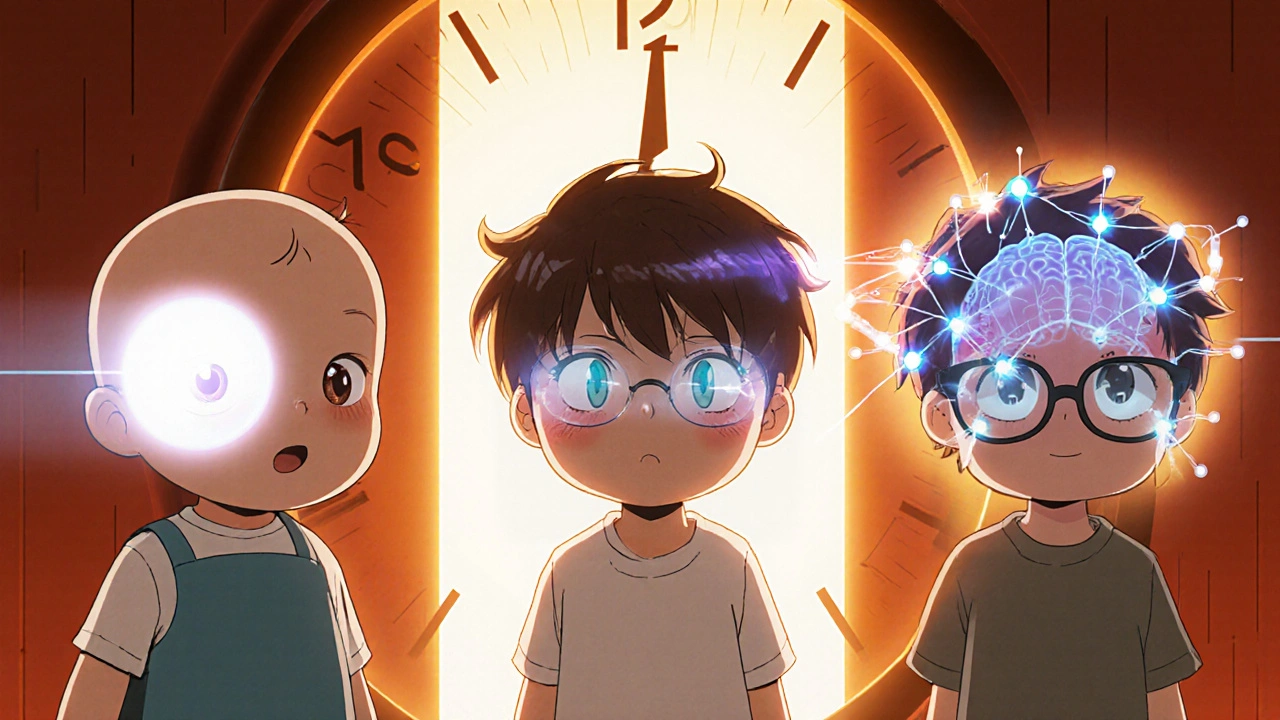
Why So Many Kids Still Miss Out
Despite the evidence, screening rates are uneven. In the U.S., about 85% of children get some form of screening. But that’s not the same as getting the right screening at the right time.
Disparities are real. Hispanic and Black children are 20-30% less likely to be screened than white children. Why? Lack of access, language barriers, provider unawareness, or just not knowing it’s important.
Some states require vision screening before kindergarten. Others don’t. Medicaid programs in 47 states cover it-but not all providers know how to do it right. And even when it’s done, it’s often rushed. A 30-second glance at a chart isn’t enough.
Cost isn’t the barrier. Screening tools are affordable. The blinq™ scanner runs under $3,500. A basic autorefractor is $5,500. That’s less than a laptop. The real barrier is awareness-and consistency.
What Parents Should Do
You don’t need to be an expert. But you do need to ask.
- At your child’s 1-year checkup, ask: "Are you doing vision screening?" If they say no, push for it.
- At ages 3, 4, and 5, insist on a proper screening. Don’t accept "they looked fine."
- Watch for signs: squinting, head tilting, closing one eye, poor hand-eye coordination, or avoiding books and puzzles.
- If your child fails a screen, get a full eye exam within 1-2 months. Don’t wait.
- Even if they pass, keep watching. Vision can change. A child who passed at 3 might need glasses by 5.
Most importantly: don’t wait for symptoms. Vision problems don’t scream. They whisper. And by the time you hear them, it might be too late.
What’s Next for Pediatric Vision Screening
Research is moving fast. The National Eye Institute is funding new studies to improve screening in diverse populations. AI-powered devices like blinq™ are becoming more common. And a 2022 study showed instrument-based screening works as early as 9 months. That could mean screening starts at the 1-year well-child visit-not just at age 3.
By 2025, the American Academy of Pediatrics is expected to update its guidelines to recommend screening starting at age 1. That’s a big shift. But it’s needed. The earlier we catch a problem, the better the outcome.
The economic case is strong too. Every dollar spent on screening saves $3.70 in lifetime costs for untreated amblyopia-lost productivity, special education, and long-term care. That’s not just good medicine. It’s smart policy.
Can a child pass a vision screening and still have a problem?
Yes. No screening test is perfect. A child might pass a basic chart test but still have subtle issues like poor depth perception, eye teaming problems, or mild amblyopia that doesn’t show up on standard tests. That’s why a normal screen doesn’t replace a full eye exam if there are concerns. If your child struggles with reading, loses place on a page, or complains of headaches after school, see an eye specialist-even if they passed screening.
Is vision screening covered by insurance?
Yes, under the Affordable Care Act, pediatric vision screening is part of essential health benefits. Most private insurance plans and Medicaid programs cover screening during well-child visits. Some states also require school-based screening. If you’re asked to pay for screening during a routine checkup, ask if it’s a separate eye exam (which may have different coverage) or if it’s the free preventive screening.
What if my child is too young to read letters?
That’s normal. For kids under 3, providers use picture charts with symbols like apples, circles, or houses (LEA symbols). For infants, they use the red reflex test and watch how the child tracks objects. Instrument-based devices like the blinq™ scanner don’t need the child to respond at all. They just need to sit still for a few seconds. The machine does the work.
How often should my child be screened?
At least once between ages 3 and 5. Many experts recommend screening at ages 3, 4, and 5, especially if there’s a family history of vision problems. After age 5, screenings should continue every 1-2 years during school years, or sooner if problems are suspected. The American Academy of Pediatrics also recommends screening at ages 8, 10, 12, and 15 as part of routine checkups.
Can screen time cause vision problems in kids?
Screen time doesn’t cause amblyopia or strabismus. But too much close-up work-like staring at tablets or phones-can lead to eye strain, dry eyes, or temporary blurriness. It doesn’t damage the eye permanently, but it can make existing problems worse. The best protection is outdoor time. Studies show kids who spend at least 2 hours a day outside have lower rates of nearsightedness. Balance screen use with play, movement, and looking at distant objects.
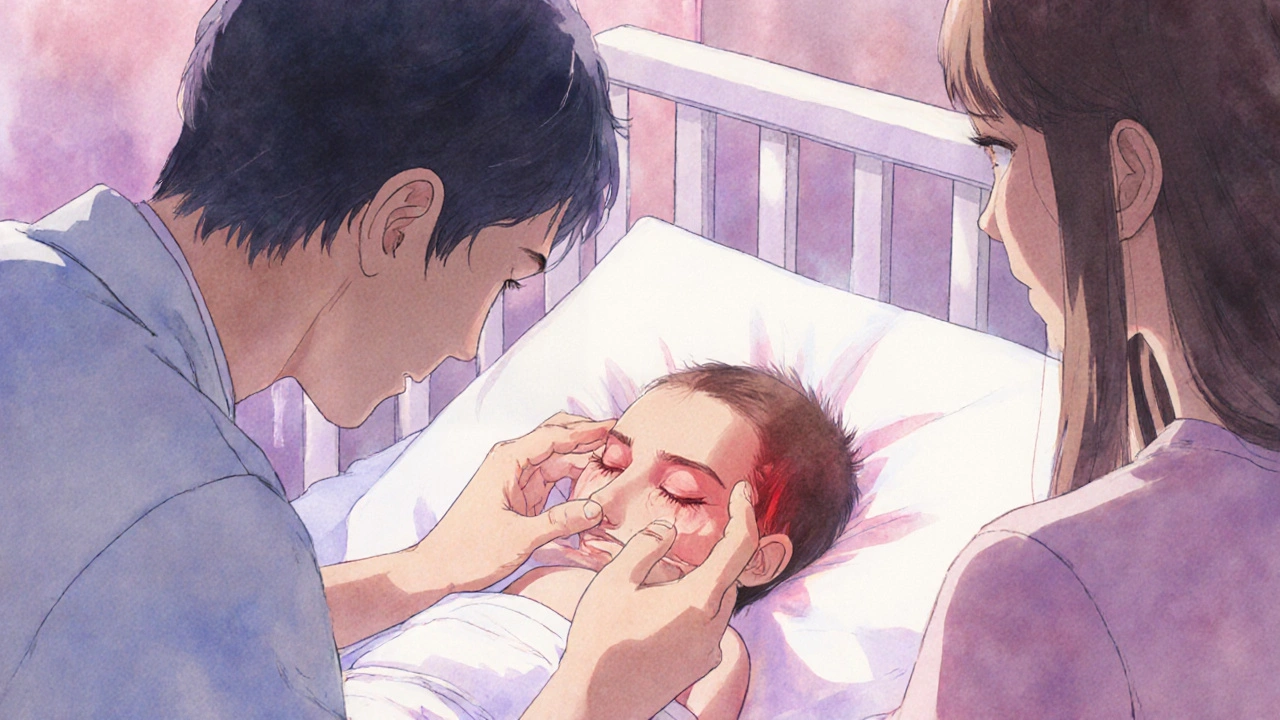

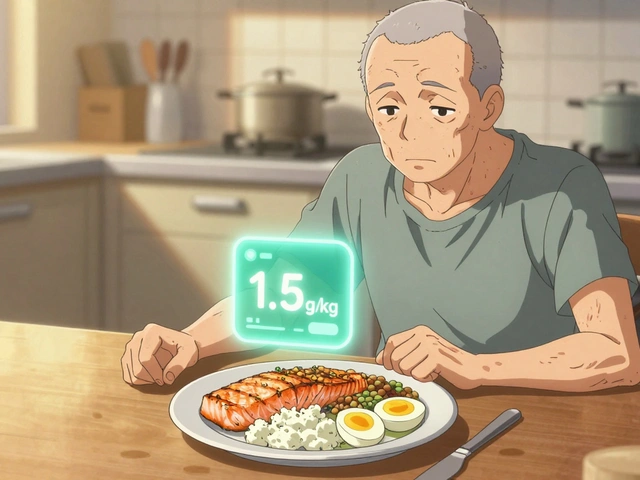
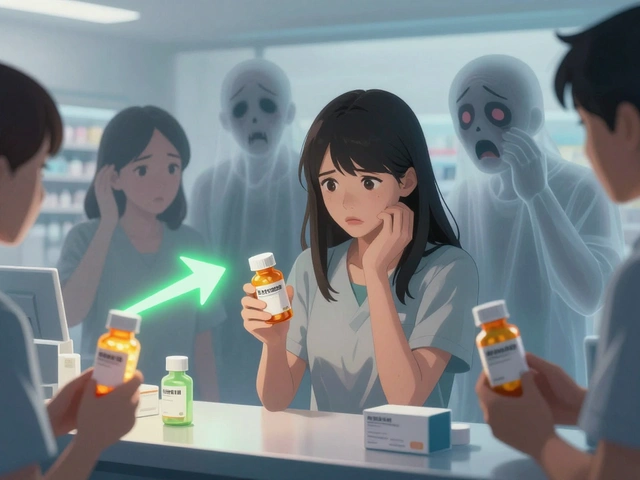
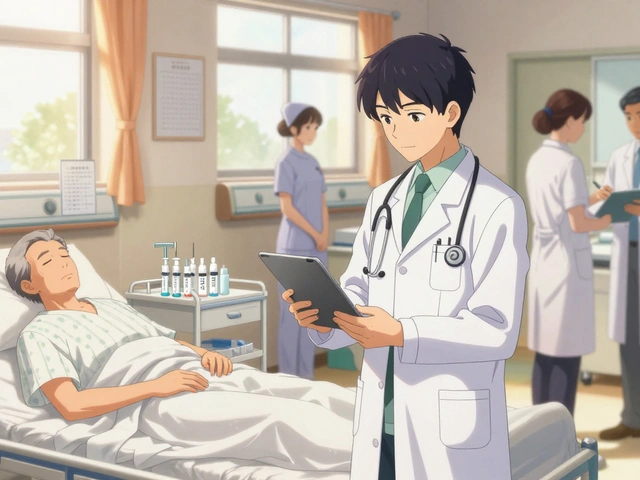
Iska Ede
November 18, 2025 AT 15:34My niece passed every ‘screening’ until she was 6, then suddenly couldn’t see the board. Turns out she had amblyopia. No one checked her eyes properly because ‘she looked fine.’ Yeah, right. Kids don’t scream when they’re going blind. They just learn to live in a blur. And now? She needs glasses, patching, and therapy. All because we treated vision like a luxury, not a right.
Gabriella Jayne Bosticco
November 19, 2025 AT 07:13It’s wild how much we underestimate how much kids adapt. They don’t know what ‘normal’ vision is. They just think the world is supposed to be fuzzy. If we can catch it early, why aren’t we doing it everywhere?
Bailey Sheppard
November 20, 2025 AT 00:14It’s not about being alarmist. It’s about giving kids the chance to see the world properly. And honestly? It’s not even that expensive. The real cost is ignoring it.
Heidi R
November 21, 2025 AT 14:56Brenda Kuter
November 23, 2025 AT 09:15My cousin’s kid got glasses at 3 and now he’s on them for life. Was that necessary? Or did someone just want to sell him lenses? I’m not saying don’t screen-I’m saying ask questions. Who profits? Why is this so aggressively marketed?
And why do they always say ‘if you don’t screen, your child will be blind’? That’s fearmongering. It’s not that simple.
Also-why do they never mention that screen time causes myopia? Why is that always ignored?
Someone’s hiding something.
Shaun Barratt
November 23, 2025 AT 23:12Instrument-based screening demonstrates superior sensitivity in children under four, with specificity comparable to optotype testing when calibrated correctly.
It is imperative that primary care providers receive formal training in proper distance measurement, occlusion technique, and interpretation of screening thresholds.
Documentation of screening results in the electronic health record is non-negotiable.
Sarah Frey
November 24, 2025 AT 14:04It’s not about blame. It’s about making the right thing the easy thing. If we make screening part of the routine like hearing tests or lead checks, we’ll save millions of kids from avoidable vision loss.
And yes-it’s covered by insurance. If your provider says otherwise, ask for the CPT code 99174. They’ll know what it is.
Katelyn Sykes
November 24, 2025 AT 20:05He got glasses and patching and now he’s 5 and reads books like a champ
People think kids will tell you if they can’t see but they don’t know what normal looks like
Don’t wait for them to complain
Ask for the test
It takes 2 minutes
Gabe Solack
November 25, 2025 AT 01:47It’s not just about glasses. It’s about brain development. The visual cortex is still wiring itself until age 7. Miss that window? You lose it forever.
Parents, please. Don’t wait. It’s not optional.
And if your pediatrician doesn’t have a device? Ask them to get one. Or go to a clinic that does. Your kid’s future is worth it.
Yash Nair
November 26, 2025 AT 01:57Your system is broken. You make everything expensive. We fix it with common sense.
Girish Pai
November 27, 2025 AT 13:55Furthermore, the cost-benefit ratio of early intervention is statistically significant at p < 0.001, with lifetime QALY gains exceeding 0.4 per screened child.
Policy must transition from optotype-dependent paradigms to AI-integrated, automated screening protocols integrated into EHR workflows. Delaying this transition constitutes a public health failure.
Kristi Joy
November 28, 2025 AT 13:58Now he’s 7, wears glasses, patches for an hour a day, and still hates it-but he can see the stars for the first time.
To every parent reading this: don’t wait for your kid to say something’s wrong. They won’t. Just ask. Just do it. You don’t need to be an expert. You just need to care enough to ask.
Hal Nicholas
November 28, 2025 AT 19:23And now you’re telling me the solution is to make parents into medical advocates? That’s not healthcare. That’s a survival game.
And if your kid doesn’t get screened? You’re a bad parent. If they do? You’re lucky.
What kind of world are we living in?